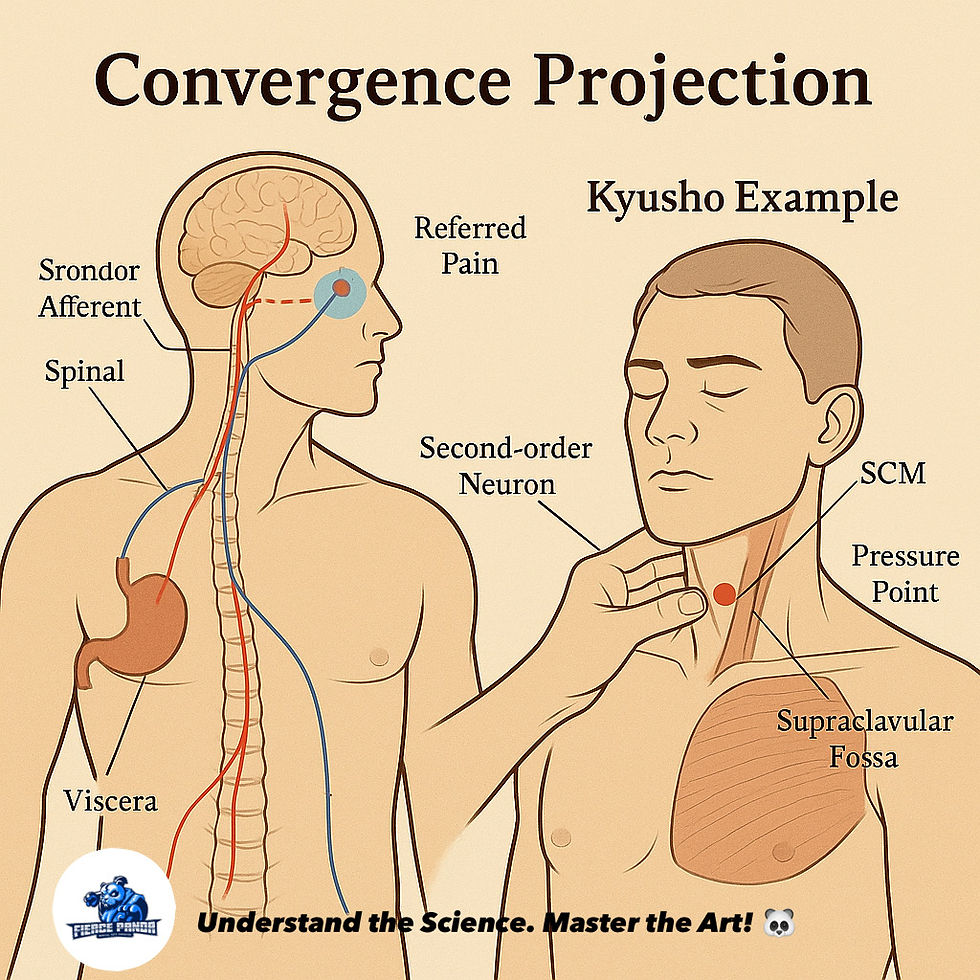Lesson: Convergence Projection
- Jul 29
- 2 min read

Lesson: Convergence Projection – Why Pain Can Be Felt Somewhere Else
What Is It?
Convergence Projection Theory explains how pain or sensory signals from different body regions can share the same neural pathway to the brain — causing referred pain or sensation.
Think of it like two roads merging onto the same highway.
If the highway lights up, you can’t tell which road the signal came from.
How It Works:
• Visceral and somatic afferents (internal organs + skin/muscle) often converge on the same second-order neurons in the spinal cord.
• Your brain isn’t good at telling which one was activated.
• So, it interprets deep/internal signals as coming from more familiar surface areas (usually skin).
Why It Matters in Martial Arts:
When you strike certain pressure points:
• The actual target may be deep (nerve plexus, vessel, or organ capsule)
• But the response is projected elsewhere — maybe to the head, limbs, or chest
Example:
• A strike to ST11/ST12 (supraclavicular fossa) may cause:
• Dizziness
• Fainting
• Jaw or chest pressure
• Shoulder or arm numbness
The brachial plexus and vagus nerve live there — but your student may say, “Why does my head feel weird?!”
You’ve triggered converging neural traffic.
Kyusho & Tuite Application:
When selecting targets:
• Use points where multiple systems overlap (e.g., vascular + nerve + fascial)
• Expect effects in strange places — that’s convergence at work
• When combining strikes or manipulations, capitalize on confusion the brain experiences in sorting signal origin
💡 Clinical Parallel:
Heart attacks commonly cause pain in:
• Left arm
• Jaw
• Upper back
Why? The visceral afferents from the heart converge with T1–T5 somatic afferents, which serve those areas.
You’re tapping into the same wiring.
Understand the Science. Master the Art! 🐼




Comments